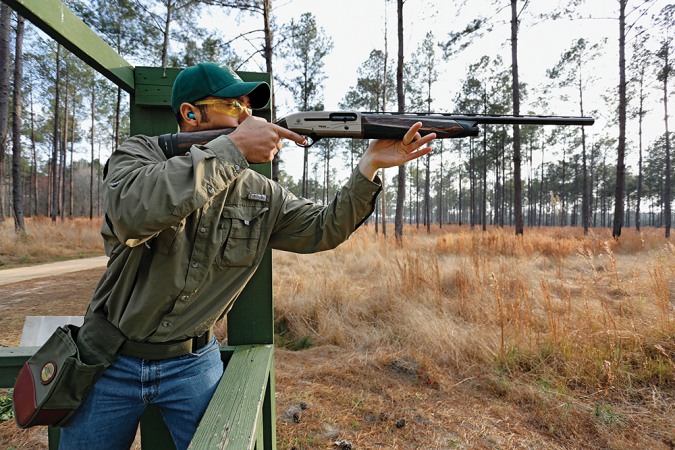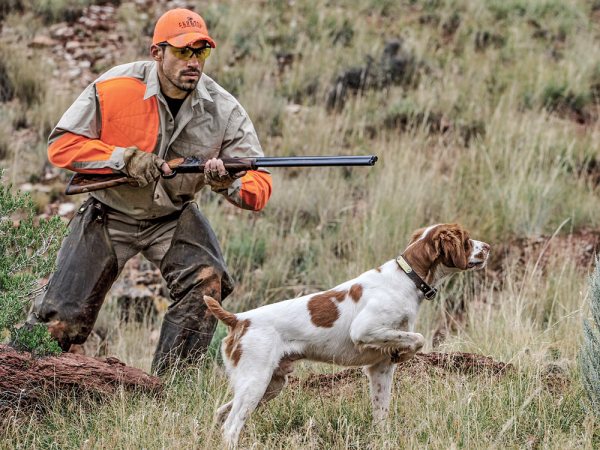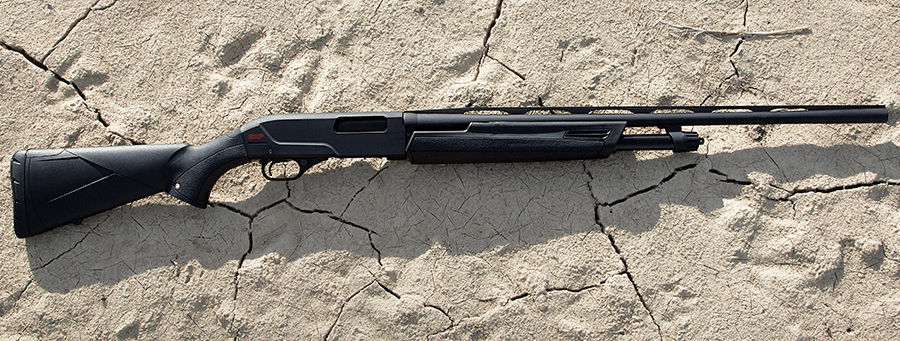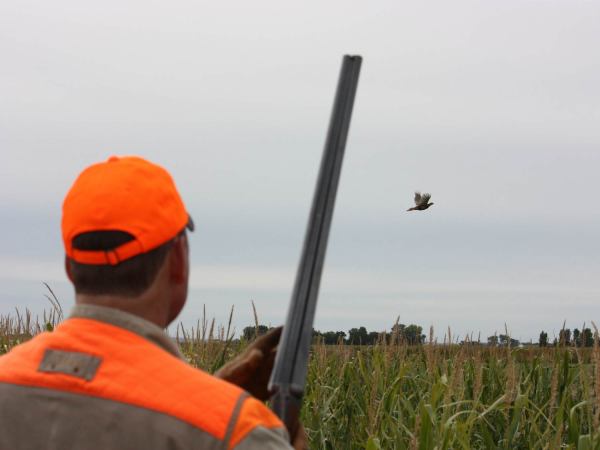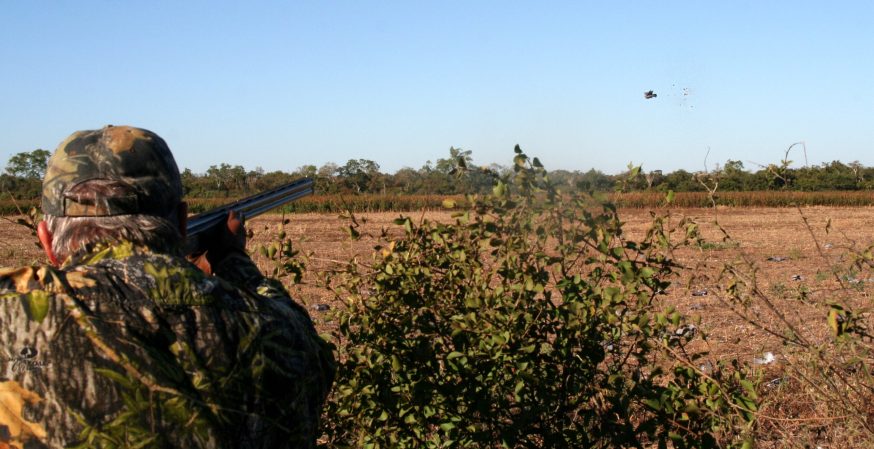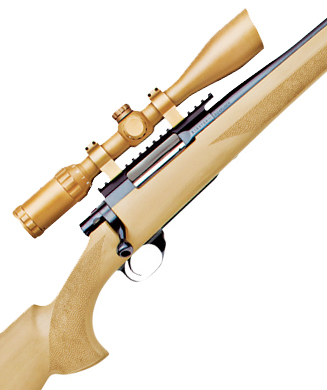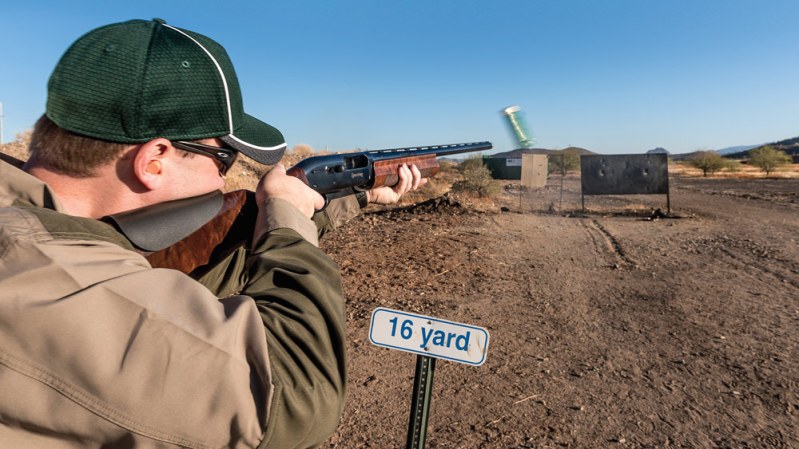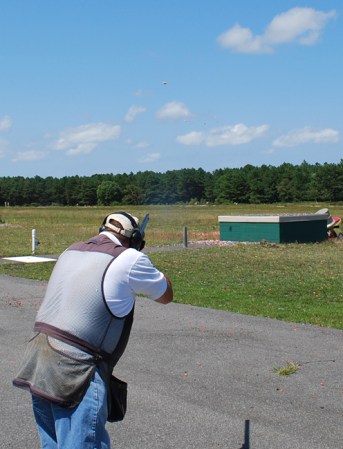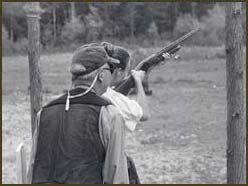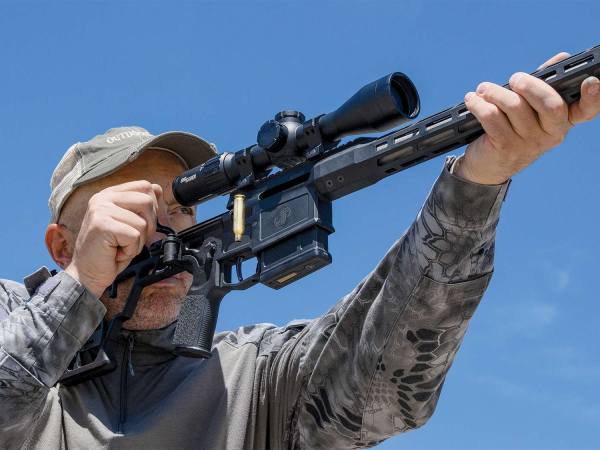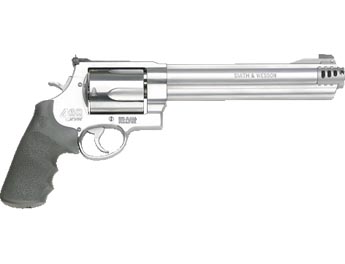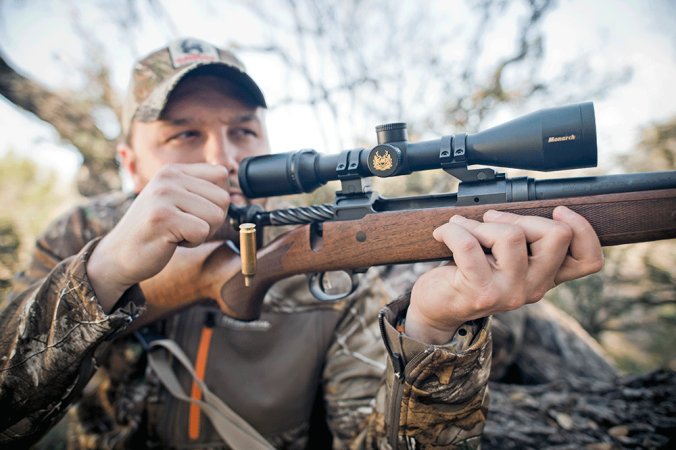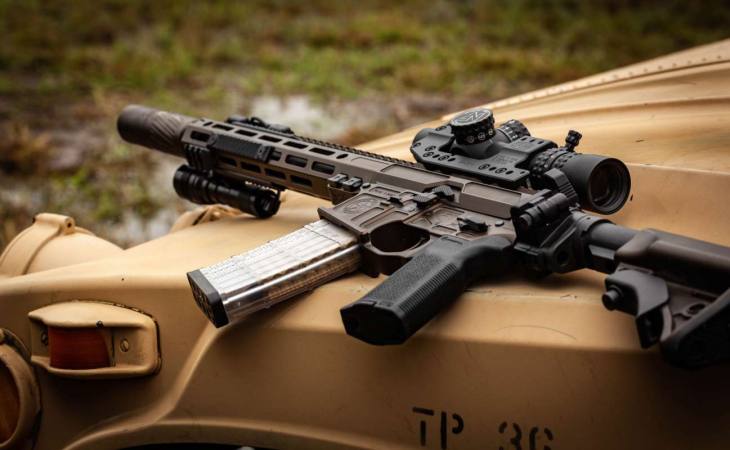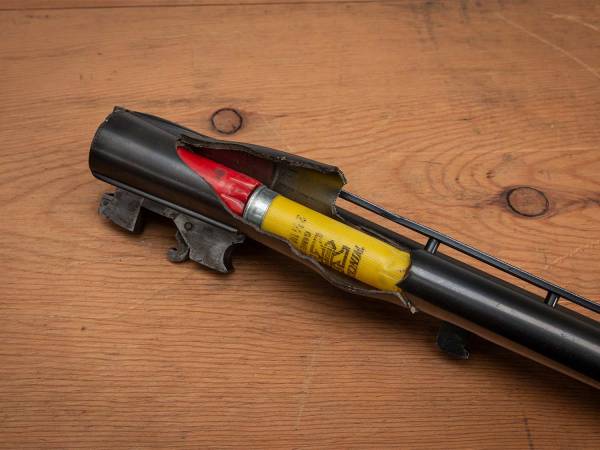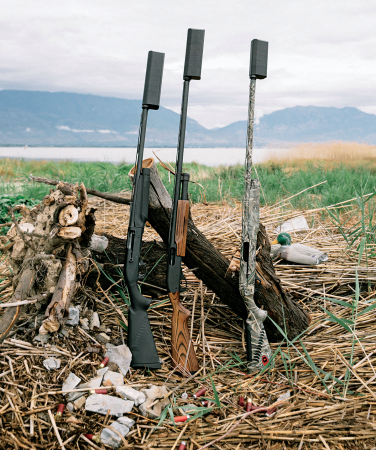We may earn revenue from the products available on this page and participate in affiliate programs. Learn More ›
When game flushes, a shooter must make several critical physical moves. One of the most important and most basic is mounting the gun. Make the mount incorrectly and your chances of scoring are all but eliminated. How’s your gun mount? Have you practiced it lately? Consider this: How many practice shots did Michael Jordan take every day? How many passes did Joe Montana throw in the week before a game? I’ve been told that even in the off-season future football hall-of-famer Jerry Rice caught 1,000 passes each day, and that was in addition to his physical regimen.
I’m not suggesting that you practice your gun mount 1,000 times a day, but gun-mounting practice is something most all of us can do easily at home without making much of a fuss. However, practicing your gun mount isn’t enough. To improve your wing-shooting, it’s critically important to practice the correct technique.
MUZZLE MANEUVERS
Practicing proper gun mounting isn’t difficult. Select a place or places where it’s convenient and safe to do so. It could be a bedroom, den or garage. Of course, the shotgun you’re going to be practicing with should be stored properly and securely, but it should also be readily accessible. Otherwise, you might not think of it and thus won’t practice every day. It’s important to practice regularly, not just for the few days before seasons open.
One key is having the muzzle positioned properly before starting. For example, when walking in on a dog’s point it’s counterproductive to have the muzzle pointing pretty much straight up. In the interest of safe gun handling, some have suggested we do that. I’m not advocating pointing the muzzle at another hunter or at the dog, but if the shooter’s initial move is to take the muzzle from pointing straight up, to below the bird, to getting the muzzle with the bird, then all is pretty much lost before the start. Try such a muzzle hold on a fast clay target; it will prove my point.
Economy of movement in the gun mount is important. Muzzle position, even as you’re walking through the woods, should certainly be safe, but it should also be in reasonable proximity to where birds might be expected to flush. To keep a safe muzzle position continually you’re probably going to have to move the muzzle fairly often.
When a bird does rocket forth, or a clay bird flies out, a typical gun-mounting mistake is a super-fast move to get the buttstock to the shoulder. Many shooters, even experienced wing-shooters, can’t wait to speed that stock to their shoulder.
The proper initial move, however, is to get the muzzle moving with the target. Immediately thereafter, start the buttstock to your shoulder. If you start the stock to the shoulder first, the gun’s muzzle will tend to dip downward, taking the muzzle away from the bird’s flight path. Also, while you’re making the initial move of the stock to the shoulder, the bird is increasing its separation from your gun’s muzzle. Consequently, to connect you have to do more catching up than if your first move had been getting the muzzle toward the bird. Additionally, your swing will be herky-jerky, first down, then up, then to the bird’s flight path. It’s the exact opposite of the economy of movement for which we’re striving.
A most important key to gun-mounting practice is moving the muzzle along the flight line first. Once you have that thought firmly embedded in your mind it’s time to start your gun-mounting work. Remember safety, however: Every time you pick up your shotgun and get ready for your practice-mounting session, make sure that it’s not loaded.
If you shoot only upland game, make most of your gun-mounting practice simulate shots such as those you regularly encounter in the field or woods. That probably means birds rising in front of you, then flying nearly straight away or quartering away. If you shoot mostly doves or ducks, think about some of the typical shots you get and practice your gun mounting with those shots in mind. Most of us could stand to practice both types.
Put any pressure to hurry out of your mind. Instead, think “slow down” as you practice your gun mount. More speed will come with time, but work very hard at slowing down initially. Try analyzing separate parts of the move to make certain you’re doing them to your satisfaction.
How far down on your side should the buttstock be when you start? A higher position might make the gun mount more easily and reliably, but is that the way you’ll be carrying the gun around in the field? Try to simulate your typical field carry during your practice sessions.
One side benefit you’ll recognize fairly soon is that your buttstock won’t hang up on clothing as often when you mount. That’s partially because you’ve been working on slowing everything down. It’s also due to the initial move of the muzzle toward the bird instead of lifting the buttstock straight up to the shoulder. By moving the muzzle toward the bird’s flight path first, you’re necessarily shifting the stock away from your body, however slightly. Now, as you mount, the butt stock is about an eighth of an inch further away from your body. Plus you’re making a slightly slower, more deliberate move of the stock.
Hung Up on Recoil Pads
If you have several shotguns, practice mounting with each of them from time to time. You’ll soon discover that all recoil pads are not created equal. Some get to your shoulder with fewer problems than others. A recoil pad is intended to dampen the effects of recoil, but what good is it if it constantly catches on clothing? Even if such a pad virtually eliminates recoil, the hang-ups can keep you from bagging game. It’s my contention that recoil pads can be critical in eliminating buttstock hang-up problems.
Gun-mounting practice is the time to discover which recoil pads don’t work too well for hunting. A simple plastic buttplate snags the least, assuming gun-fit problems don’t come into play. In my view all shotguns that are intended to shoot reasonable field loads should wear the plastic buttplate. If you’re shooting big magnums, a plastic plate is not the practical option.
Admittedly, there are a few modern recoil pads that work as well or almost as well as the plastic buttplate when it comes to avoiding clothing snags. A checkered butt is great, too, but it’s more prone to breakage. If a checkered butt breaks, it’s expensive to replace. If a plastic buttplate breaks, you won’t have to shell out much money for a replacement.
Try mounting your best shotgun 10 times in a row, then put it down. Think about the mount in this order: 1) slow down; 2) move the muzzle first; 3) slow down; 4) economy of movement; 5) slow down; and 6) smooth, smooth, smooth. Perform this 10-time mount practice as many times as you can during the day. With this small time investment you can easily get in 100 gun mounts every day. When opening day arrives you’re going to be more prepared than ever. When that first bird flushes, the hours of practice will make your shot so much easier.
Questions? Contact Nick Sisley at nicksisley@hotmail.com.
Aids to Save Your Hearing
For years I’ve protected my hearing while shooting with a pair of yellow cylindrical foam earplugs in conjunction with a pair of Peltor liquid-filled Passive Hearing Protectors. The inexpensive ($18-$33) combination has served me well and I recommend it. For information, visit www.aosafety.com or phone Peltor at 800-327-3431.
One of the shortcomings of the ear-plugs-and-muffs combo is that you’ll have trouble hearing what your squad mates are saying. While this is often a good thing, you might also miss an important range command. Consequently, many shooters are buying the newest “active” earmuffs. These muff types actually amplify sounds. While wearing them you hear sounds, including conversation, at an increased decibel level. Sounds that reach a certain level, such as a shotgun blast nearby, are dampened by the battery-operated electronics inside the muffs. The first generation of active muffs actually blocked out all sound. The latest version has been engineered to suppress dangerously loud noises. All sounds come through these muffs, but at a safe level. One muff of this type, the Pro Ears Dimension Sports Series, is available from Ridgeline. There are four models from which to choose; I suggest the Pro-Slim ($220) and the Sporting Clays ($220) Dimension models. Log on to www.pro-ears.com or call 800-891-3660.
Some shooters think muff-type protectors are too big and too obtrusive. The MiniCanal from E.A.R. is one alternative. These are tiny electronic units, one of which fits in each ear. Aptly named, the battery-powered MiniCanal suppresses loud sounds to a safe level, yet amplifies normal sounds such as conversation. MiniCanals do not require ear impressions. They sell for $425 each or $795 per pair. See them on the web at www.earinc.com or call 800-525-2690.
Earplug sound suppressors are the best choice for hunting and target shooting, followed by “active” earmuffs. Whatever type you choose, it’s important to use sound suppressors to protect your hearing.

